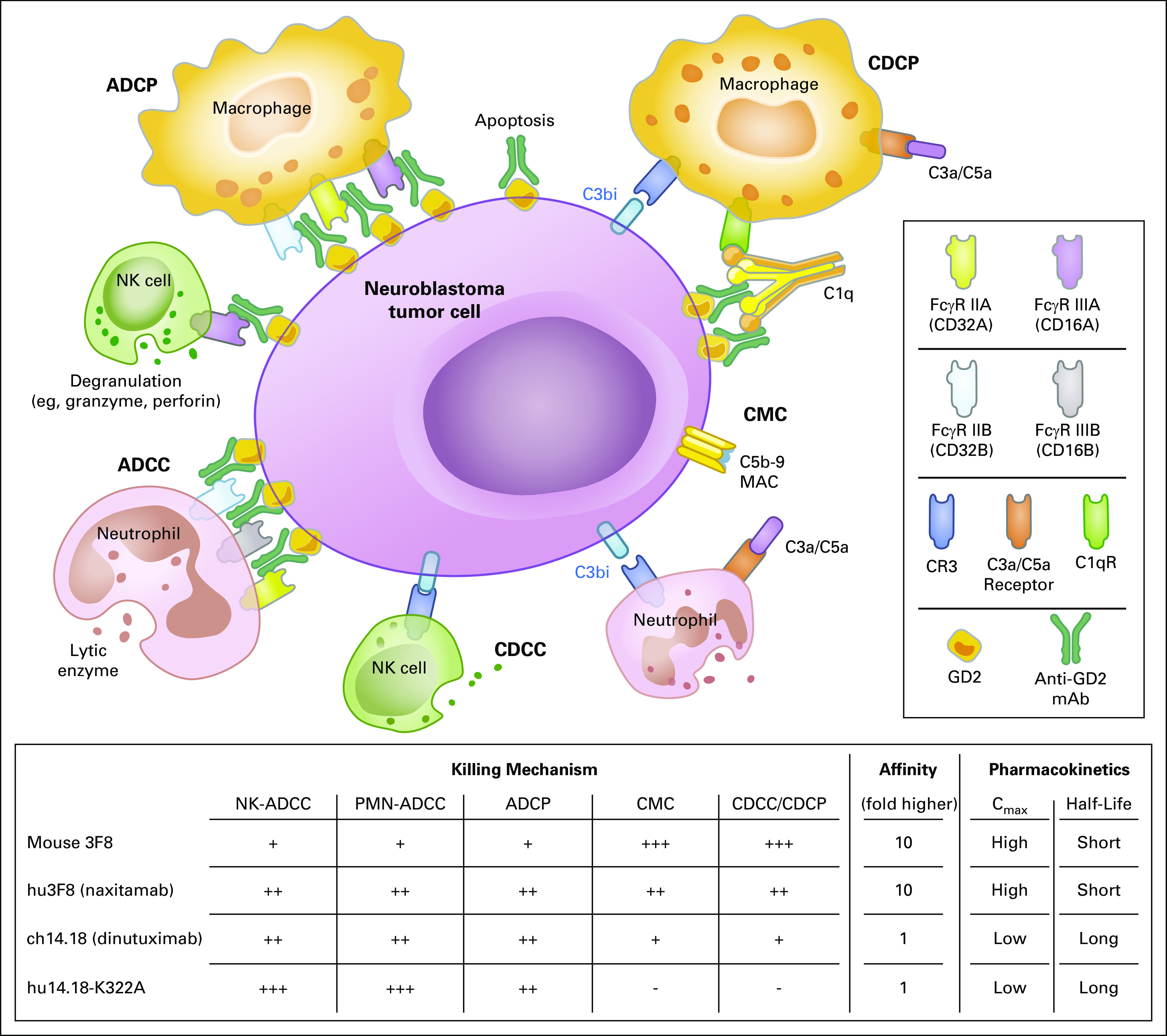FIG 2.

Mechanisms of action of anti-GD2 monoclonal antibodies. Anti-GD2 monoclonal antibodies (mAbs) mediate active immune response against disialoganglioside (GD2)–positive tumor cells. Anti-GD2 mAbs bind to cell surface GD2 and induce immune reactions including direct tumor cell apoptosis. Recruitment and signaling of type I receptors (FcγR I-III and their isoforms) through antigen-antibody complexes trigger antibody-dependent cellular cytotoxicity (ADCC) and antibody-dependent cellular phagocytosis (ADCP). Alternatively, activation of complement pathway leads to tumor cell killing by the following 2 distinct processes: first, direct tumor cell lysis through complement-mediated cytotoxicity (CMC) by assembly of membrane attack complex (MAC; C5b-C9); and second, complement receptors (CRs) on effector cells recognize opsonins, such as C3b, and trigger complement-dependent cellular cytotoxicity (CDCC) and complement-dependent cellular phagocytosis (CDCP). These various immune responses by anti-GD2 mAbs can be modified further through Fc engineering by mutation and/or glycomodification to reduce immunogenicity or toxicity and increase the antitumor effect of engaging immune effector cells. Cmax, maximum concentration; NK, natural killer; PMN, polymorphonuclear leukocyte.
